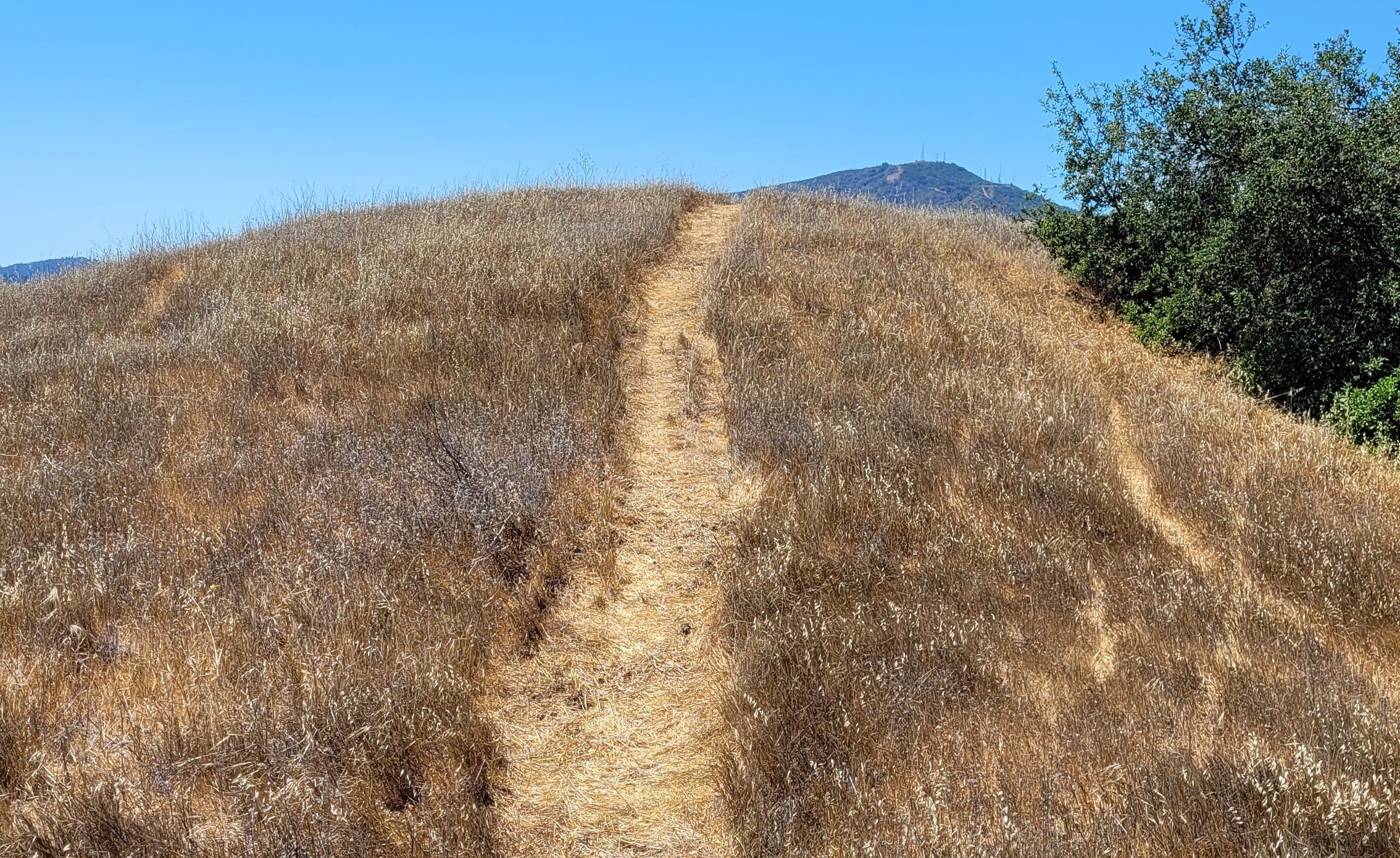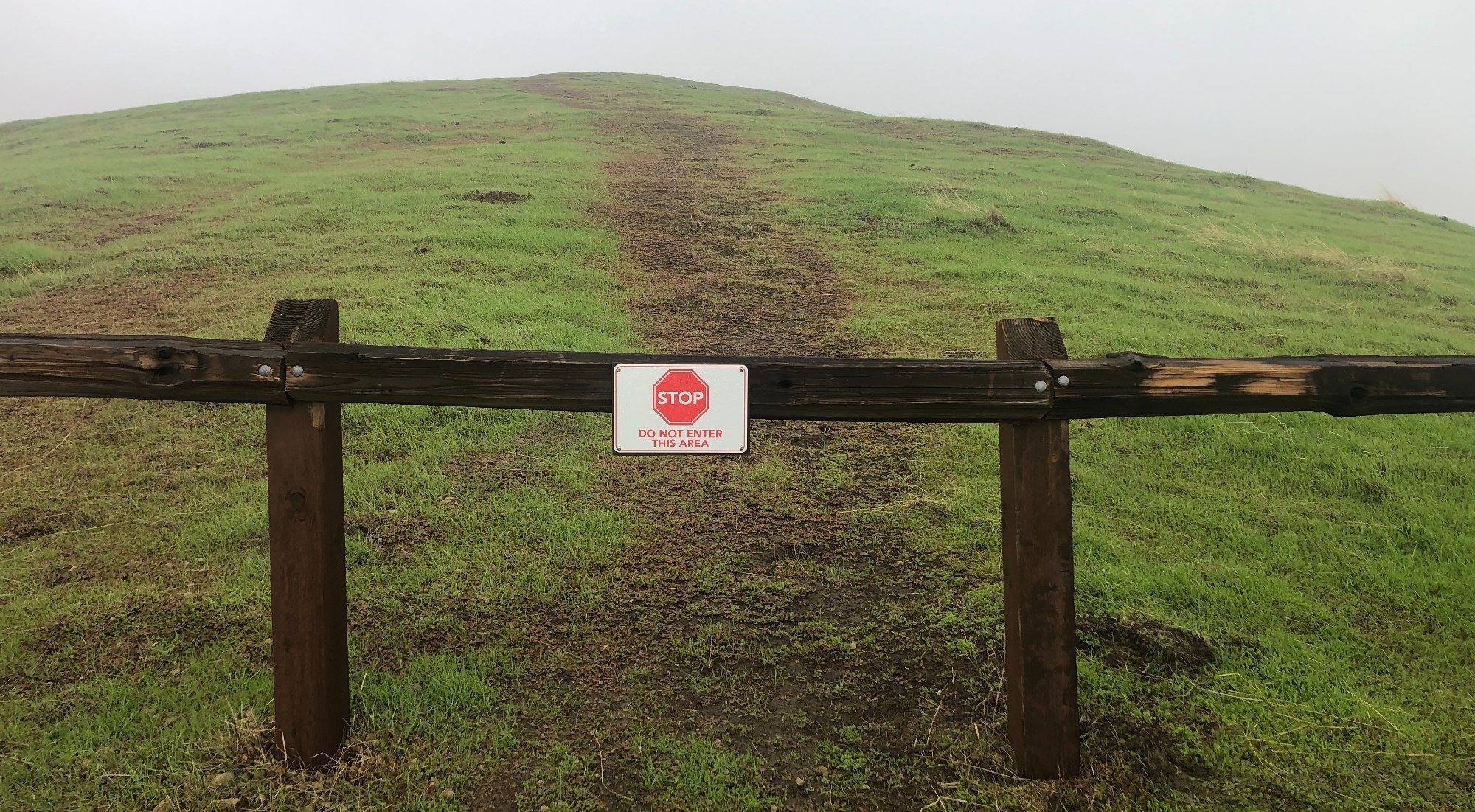Virtually every preserve, reserve, or open space with a trail network open to the public will likely experience the phenomenon known as social trails. If you are an avid hiker, odds are you’ve seen one, even if you didn’t have a name for it.
A social trail is an unauthorized trail that usually cuts a sharp turn or goes to a part of the preserve that is closed. Many social trails are started by visitors wanting a short cut, and then get more prominent from ongoing foot traffic. They are far less developed than the official trail and are often smaller. A good rule of thumb to identify one: If it's not on the preserve map, then it's a social trail and is not part of trail system.

While it’s often difficult to resist the allure of a shortcut or a trip off the beaten path, social trails can be dangerous to the user and can harm the environments and habitats they cut through.
We thank you for staying on the trail during all your outdoor adventures, and here’s why:
Protecting Wildlife
Human presence can scare animals from their homes, further decreasing the area they feel safe exploring. Additionally, scaring them away from the trails means there will be fewer wildlife sightings, which are helpful for their conservation.
Supporting native plant growth
Foot traffic is quite harmful for any plants that are trying to grow. Plants will stop growing in the heavily compacted social trails. And on preserves with a variety of rare and native plants, using social trails means threatening the local flora, potentially reducing the number of native flowers and grasses.
Keeping yourself and others safe
A user faces a variety of risks when they head off-trail. Because social trails are not maintained, they are often heavily rutted with very unstable footing, making the risk of slipping or falling much higher. This can be incredibly dangerous, as many trails are on slopes or are near drop-offs. Additionally, in the event of an emergency, trying to find someone off-trail is “like trying to find a needle in a haystack,” said Andres Campusano, Supervising Open Space Technician at the Authority. “We want our users to be safe and comfortable, and if they need emergency support in an unmarked area, response will be delayed.”
Reducing erosion
Social trails also contribute to erosion of the landscape. Heavy foot traffic reduces the integrity and strength of the soils and can end up polluting creeks and destroying habitat.
Protecting ecosystems
Social trails often cross into areas that are being restored to protect sensitive or damaged habitat, and continuing to use them can directly disrupt restoration efforts. Some restoration projects even involve removing social trails because of the damage they do to ecosystems. “I have worked on two different restorations at Sierra Vista trying to remove social trails,” Campusano recounts. “Both sites were destroyed in a matter of months because of people still walking through them even though they were signed as a restoration.”
They disturb the larger ecosystem
One of the many benefits of having trail networks in open spaces like Authority preserves, is that it provides the public with opportunities to safely and passively interact with nature in a way that doesn’t disrupt the natural areas they are exploring. When using social trails, however, the ecosystem can be disturbed, harmed, or dramatically altered, which defeats part of the purpose of having designated trails.
We are grateful to the many respectful visitors of these vast natural landscapes that Mother Nature provides us, and we look forward to continuing to provide access to open spaces for all to enjoy.

